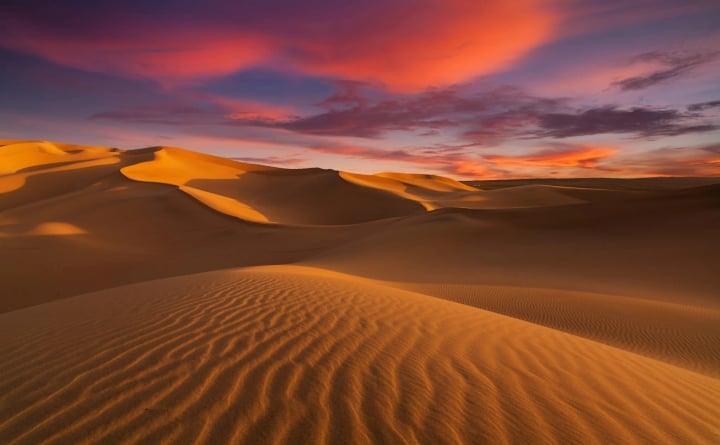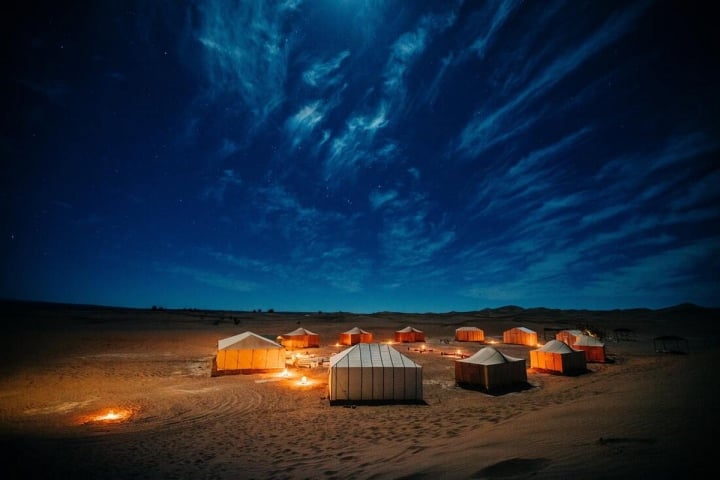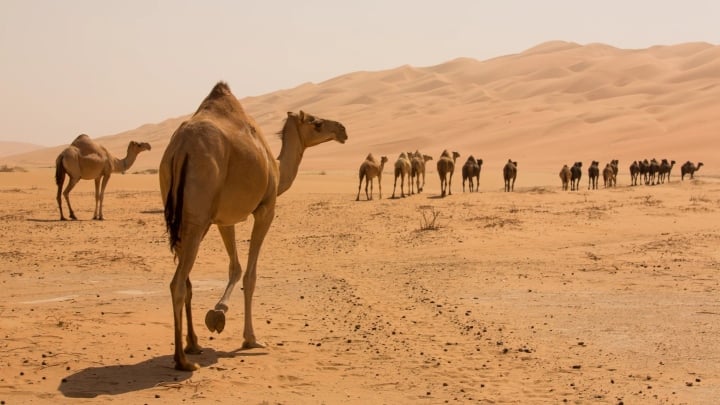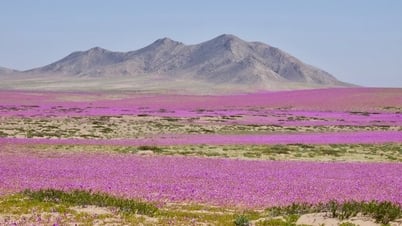When going to the world's major deserts such as the Sahara in North Africa, people often bring a lot of jackets and sunscreen to avoid sunburn. But few people know that at night the temperature in the desert drops, very different from the day, so you also need to have extra warm clothes. To understand why the desert gets cold at night, people can learn about the activities of the sand here.

At night, the temperature in the desert will drop.
Why do deserts get cold at night?
In arid deserts like the Sahara or the Atacama Desert in Chile, humidity, the amount of water vapor in the air, is practically zero. At the same time, unlike sand, water has a very large capacity to store heat. Therefore, when water vapor in the air holds heat close to the ground, it helps prevent this heat from being lost to the atmosphere.
Air with high humidity also requires more energy to heat up, which means it takes longer for that energy to dissipate and help cool the surrounding environment. So the lack of humidity in deserts allows these arid places to heat up quickly but also cool down just as quickly.
Or to put it another way, at night there is no heat from the sun to heat up these vast sandbanks, so the temperature will drop very quickly. Because everyone knows that the ability of sand to retain heat is very poor, so when it is not supplied with more heat, the old heat will be released. Therefore, sand is the main reason why the desert has this strange phenomenon.

Nighttime temperatures in the desert can drop to 18 degrees Celsius.
When the air is extremely cold, it means that these sands do not have much moisture. The hot, dry deserts have an average annual temperature of 20 to 25 degrees Celsius and can reach a peak of 43 to 49.5 degrees Celsius during the day and minus 18 degrees Celsius at night.
As a result, most of the plants that grow here are short and stout, such as shrubs close to the ground, and there are few large mammals because they are often unable to store enough water. At the same time, in places like deserts, rainfall is very low and there is little chance of large trees providing shade, making it difficult to live.
Some species of animals and plants live in the desert.
Despite the erratic temperature changes in desert regions, many animals and plants still adapt and grow well. However, these species still face some unavoidable difficulties such as finding food and drinking water during the time of high temperatures.
Reptiles, known as the most abundant and diverse group of animals in the desert, are well adapted to extreme temperature changes. Because they are cold-blooded, they do not need to seek energy to maintain a stable body temperature. Their small bodies also help many reptiles find shady corners during the day or warmer rocks at night.

Camels thrive in desert environments.
However, large warm-blooded or endothermic mammals like camels have large bodies that make it difficult to find shelter from the sun and reduce their body temperature. Camels, on the other hand, can maintain a stable body temperature in both hot and cold temperatures. Because their bodies have many layers of insulation in the form of fat and thick fur, they do not absorb too much heat during the day and lose too much at night.
Plants, on the other hand, are more vulnerable in desert environments because they cannot move. That is why iconic desert plants, such as cacti, have developed a variety of defenses such as thorns and toxins to protect their precious water resources from predators.
Tuyet Anh (Source: Synthesis)
Useful
Emotion
Creative
Unique
Source


![[Photo] Solemn opening of the 12th Military Party Congress for the 2025-2030 term](https://vphoto.vietnam.vn/thumb/1200x675/vietnam/resource/IMAGE/2025/9/30/2cd383b3130d41a1a4b5ace0d5eb989d)
![[Photo] Panorama of the cable-stayed bridge, the final bottleneck of the Ben Luc-Long Thanh expressway](https://vphoto.vietnam.vn/thumb/1200x675/vietnam/resource/IMAGE/2025/9/30/391fdf21025541d6b2f092e49a17243f)


![[Photo] The 1st Congress of Phu Tho Provincial Party Committee, term 2025-2030](https://vphoto.vietnam.vn/thumb/1200x675/vietnam/resource/IMAGE/2025/9/30/1507da06216649bba8a1ce6251816820)
![[Photo] President Luong Cuong receives President of the Cuban National Assembly Esteban Lazo Hernandez](https://vphoto.vietnam.vn/thumb/1200x675/vietnam/resource/IMAGE/2025/9/30/4d38932911c24f6ea1936252bd5427fa)




























































































Comment (0)